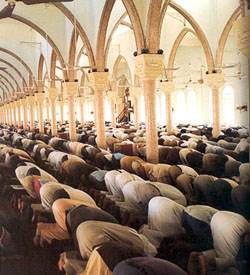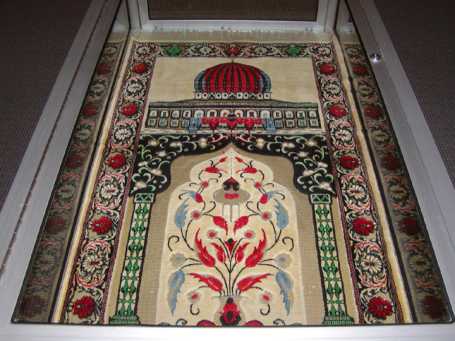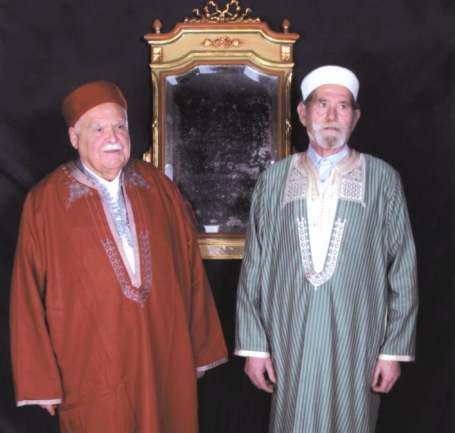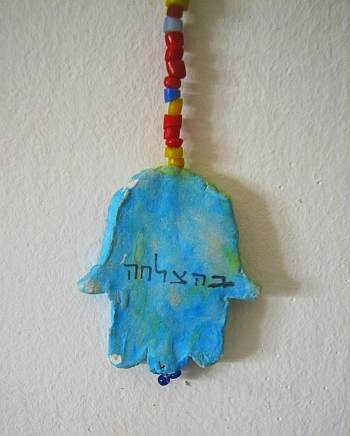The French historian Fernand Braudel writes:
“Civilizations are not mortal. They survive transformations and catastrophes and when necessary rise up again from their ashes (…). Islam probably sprang from desert Arabia, crossed by caravans and with a long past behind, but it is above all a territory acquired by the conquest of Arabic horsemen and camel-drivers even too easily: Syria, Egypt, Iran, northern Africa. Islam is primarily a heir of the Near East, a whole series of cultures, economies and ancient sciences. Its heart lies in the narrow space that goes from Mecca to Cairo, Damask and Baghdad. (…)”

“A civilization is in fact not only a religion – however a religion may be at the centre of any cultural system. It is an art of living as well, i.e. the reproduction of thousands of behaviours. In ‘The Arabian Nights’ saluting a king means ‘kissing before him the earth amid his hands’. Well, it is a gesture already customary at the court of the Parthian king Khosrau (531-579 AD) – Braudel continues – and it is the same gesture that in 1500 and 1600 (and later) European ambassadors in Istanbul, in Ispahan or in Delhi tried to elude finding it extremely humiliating for themselves and for the princes they represented. [The ancient Greek Historian] Herodotus, [490-425 BC] was upset by some [Ancient] Egyptian manners: ‘In the middle of the road, as a salutation, they prostrate the one in front of the other, lowering their hands down to their knees.’ “
“Think about the traditional costumes of the Moslems whose evolution will be very slow [see picture above]. It is already recognizable – Braudel argues – in the dress of the ancient Babylonians, described by the same Herodotus [more than] twenty-five centuries ago: ‘The Babylonians first of all wear a flax tunic down to their feet (which we would today call gandura, notes E. F. Gautier), and on top of it another wool tunic (which we would call djellaba); then they wear a short white mantle (we would say: a short white burnus); and they cover their heads with a mitre (a fez, today, or tarbush).’ And we could continue talking of the houses (pre-Islamic), and of food and superstitions: the hand of Fatima, … it already adorned the Carthaginian funeral steles (see figure below).”
“Islam is evidently tied to the compact historical ground of the Near East.” (…) In short – Braudel concludes – any study of our present ways of thinking necessarily has to look at the endless past of the civilizations.”
(La Mediterranée, by Fernard Braudel, Flammarion 1985. Translation by Man of Roma. Square bracket text is by MoR)
(The end )




I just know what i am wearing on my neck!!! When I got this “Hand of Fatima”, yes I found that it looks like a hand, but some people in here said, it looks like cuttlefish, or like an inverted maize..etc.. It’s very interesting to know the story about that. 🙂 The “hand of Fatima” always be with me, I believe it will protect me. I found that i was so stupid in the past not to find what it means when i got it, just guess what it looked like. Thank you so much manofroma wrote this post here.
It seems Arabic and Jewish cultures are something similar or related…isn’t it?? Though i don’t understand well, i found everything in Arabic countries full of mysteries, refined and with national features. Hope I would have chance to visit these countries, get to know more about their civilization and see the real Sahara lol~~ 😉
@AutumnSnow
So it seems you have a necklace or something with Hamsa as a pendant? Well, actually – and also according to French Braudel – the Hamsa or “Hand of Fatima” seems older than Islam and like a kind of protection against evil. It is one of those permanences I like to point out in my blog, which is a simple research of the ancient roots of this side of the earth, so far from the side you belong to.
I agree with you. Arabic countries are among the most fascinating cultures on earth and I feel a lot of attraction for all this as well. Happy this post was of any help to you and helped to establish a sort of connection between China and the Mediterranean.
All the best from the West, sweet AutumnSnow!
Yes, this blog establishes a “bridge” between Eastern and Western world. It pull us close together. Thank you very much, ManofRoma. 🙂
@Autumnsnow
You seem such a sweet woman, and I thank you for your contribution to my blog. I know so little about you.
I wish you a good night, AutumnSnow, although maybe at this time you are probably awake, while I am about to go to bed. Have a good day then, woman from China.
Man of Roma
Pingback: Mare Nostrum, Omertà, Patriarchy. 1 « Man of Roma
Pingback: Mare Nostrum, Patriarchy, Omertà. 2 « Man of Roma
Pingback: Echoes from the Mediterranean. Part 1 « Man of Roma
Thank you for this lovely history lesson.
I now understand your Diana reference.
I am thinking of traveling to Istanbul in May. How many days should we stay there to see it? We will be in Greece for 5-7 days and maybe have 3 additional days…
Oh, Istanbul, Constantinople, it would take years. But 3 days are ok for a peek at such a marvel! Hope my post didn’t sound didactic. Btw, wonderful season, May, for those places.
Istanbul, Constantinople, my foot! It’s Byzantium! Let’s get that straight!
If you want some entertainment for the plane ride, may I suggest reading Villehardouin’s chronicle of the Fourth Crusade? Talk about culture-clash!
Lichanos, you francophile, throwing down the gauntlet because of a beautiful lady?
I’m not Man of Athens, I remind you, plus Byzantium’s history was not that remarkable until it became the ‘Second Rome’.
Oh, Villehardouin’s chronicle, yes: ‘Histoire de la conquête de Constantinople‘, maybe?
😉
Not that “la conquête” was all that glorious. After all, squeezed by a huge debt owed the Venitians, Villhardouin betrayed his original sponsors and took his army to Byzantium instead of Jerusalem. Once there his behaviour was all but glorious, christian or chivalresque.
@Paul & MoR:
…his behaviour was all but glorious, christian or chivalresque.
EXACTLY! You know what I like…
Lichanos, I’ll read it tomorrow (already had a peek). I have to write something on Sicily, or I’ll forget ALL of it.